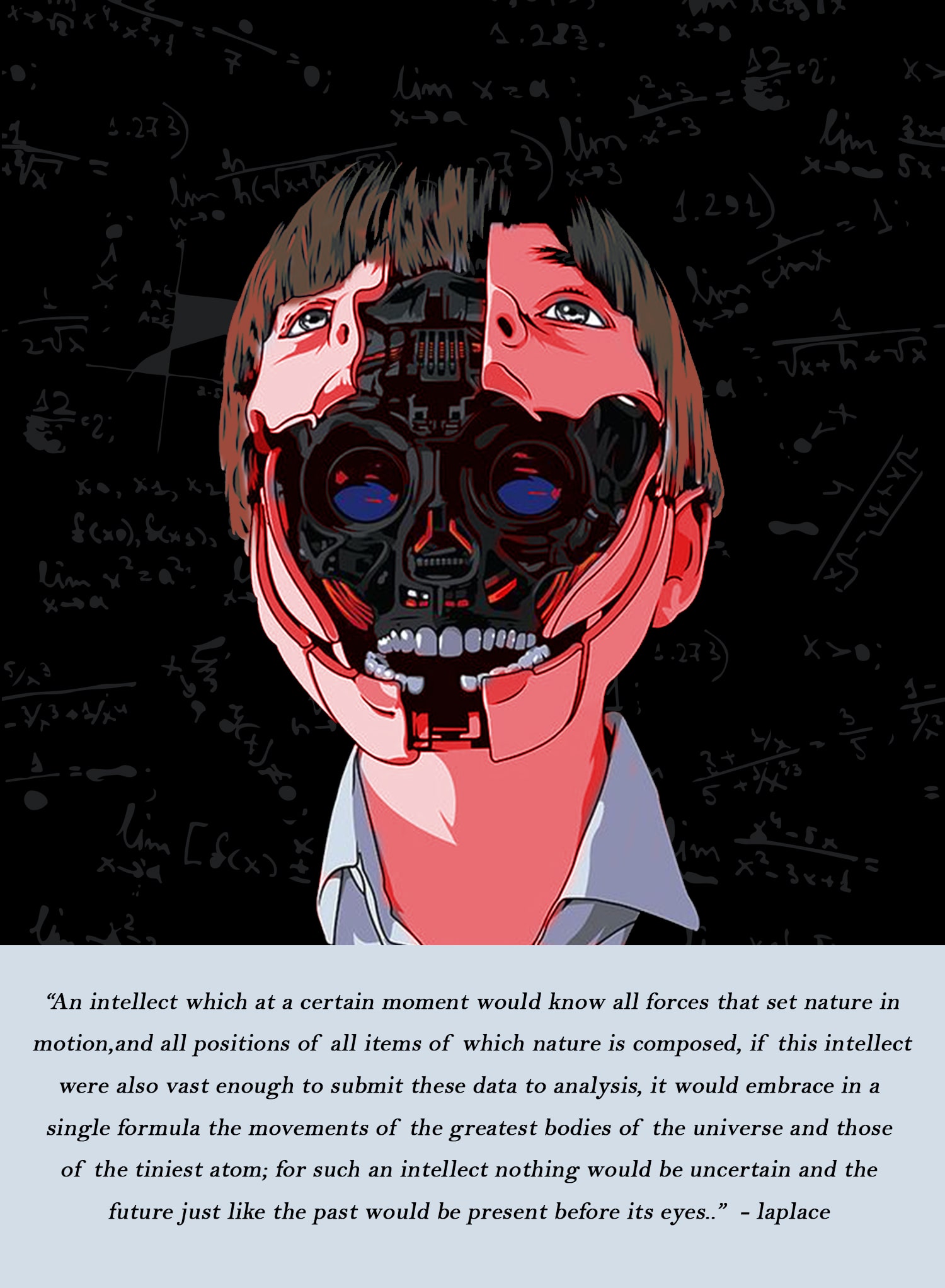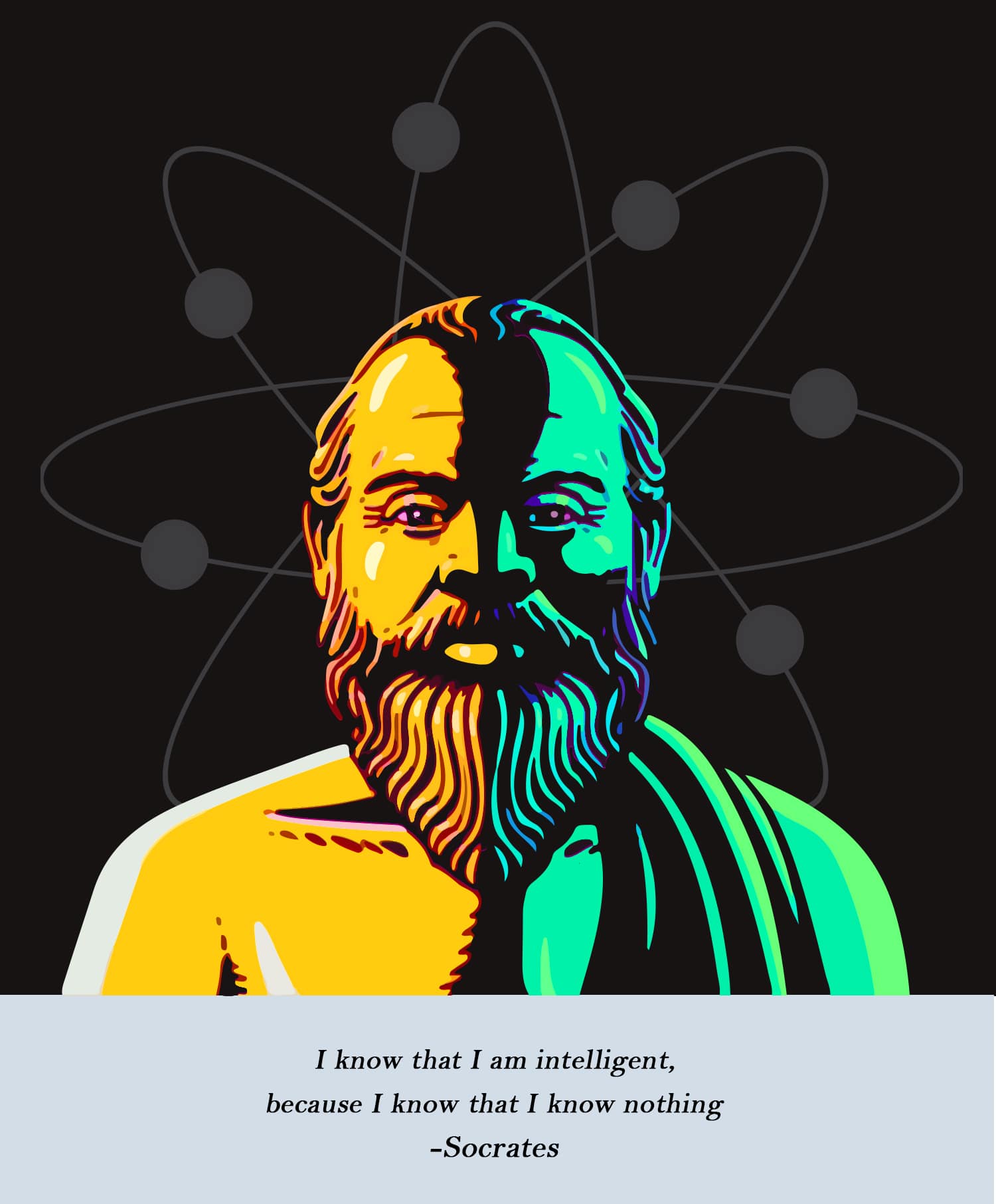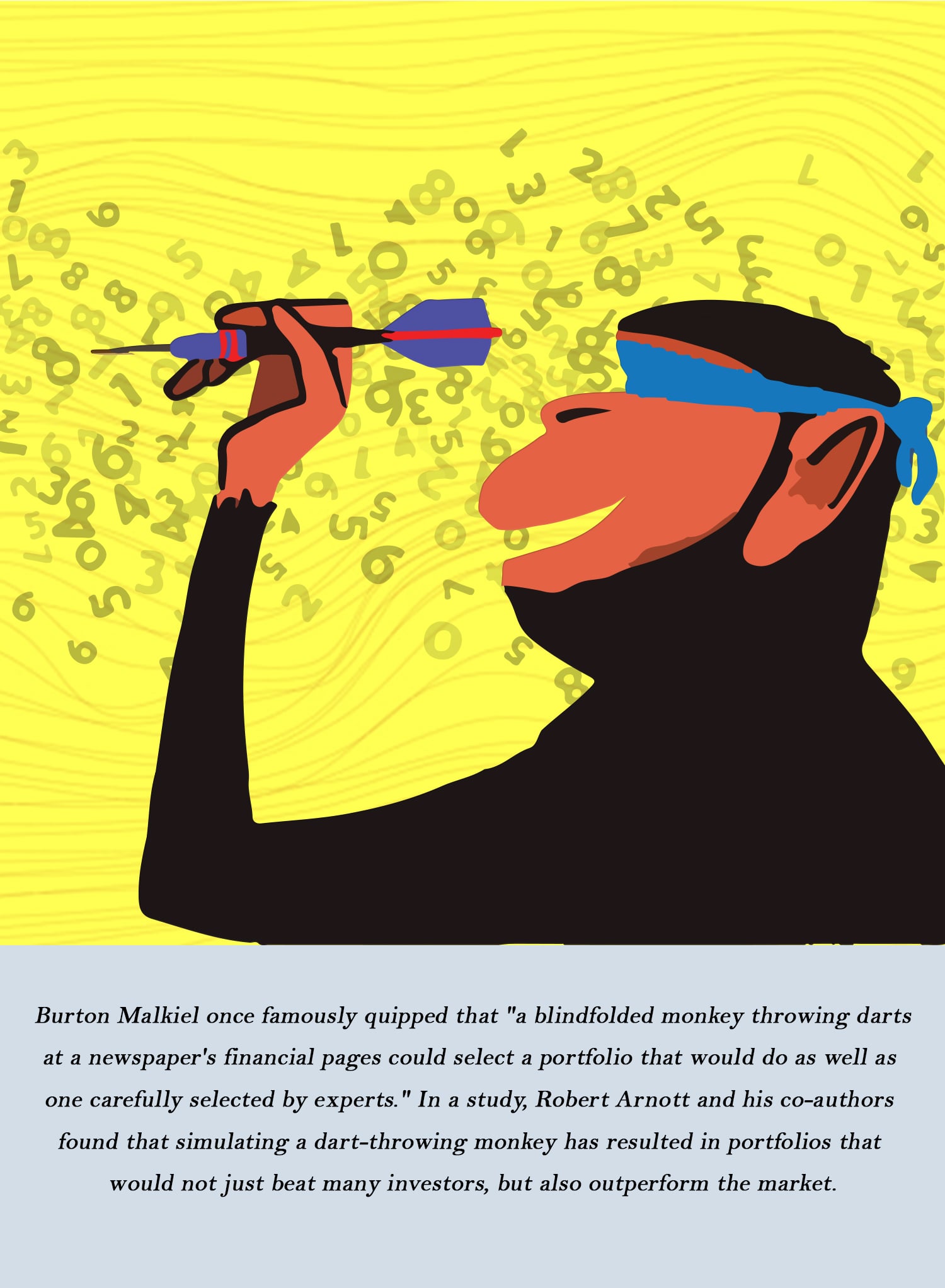
Published 28th Apr, 2019
It was the third time my phone rang that evening. I couldn’t ignore it any longer.
I woke up, still half asleep and sheepishly looked at my phone.
6:36 pm.
I had been sleeping for 8 hours on a weekday afternoon.
‘ Shameful’ — I mumbled to myself and quickly hopped out of bed.
I had three missed calls from Mom, 5 unread messages on Whatsapp and one strange notification on Facebook Messenger. I hardly ever got messages on Facebook. So I was quite curious to see who it was. However, my curiosity quickly gave way to disappointment as I found out the message was addressed to Finception.
“Dear Finception, I actually enjoy reading your articles. But it doesn’t look like you have conviction in anything you say. You always take the middle side. What is the point if you are not going to say if weather one should buy or hold or sell. As research analyst if you don’t have comviction in your calls you shouldn’t even be doing these researches and stuff. You are wasting your time”
My body began to bristle with rage. How dare she? — I thought.
This wasn’t the usual criticism — the kind we receive on our stories. This was a critique of everything we stood for, our intent, our passion — this labour of love. I immediately started typing a long-winded reply castigating the lady for not knowing anything about investing and just as I was about to send the message, my phone rang once again. It was — “Mom”.
After about 20 minutes on the call, I was back to being myself. I grudgingly opened Facebook and stared at the message. The clouds parted, but the questions still remained!
Was there any truth in the lady’s message? Could it be possible that she was right? Do we lack conviction? Is that why we refrain from taking a clear stand?
I needed a diversion.
Three days earlier I had picked up a sci-fi novel— a recommendation from a dear friend. I still hadn’t started reading the book, but I was beginning to think this was perhaps the best time for me to put my mind at ease — read some fiction.
I picked up the book and turned to the first page. The title read — The Three Body Problem, Cixin Liu.
10 hours later. I was itching to write my long winded reply once again. Only this time it wasn’t going to be some haphazard reply. It was going to be a full-blown essay.
“Can the fundamental nature of matter really be lawlessness? Can the stability and order of the world be but a temporary dynamic equilibrium achieved in a corner of the universe, a short-lived eddy in a chaotic current?” ― Liu Cixin, The Three-Body Problem
In 1889, Henri Poincaré*, a French Mathematician began working on an interesting puzzle called the Three Body Problem. This startlingly simple mathematical problem had confounded some of the greatest mathematicians of yesteryears. While the solution remained ever elusive, the premise of the problem, however, was rather simple.
If you were to know the mass, location and velocity of 3 celestial bodies in space, how then would you predict the future path of their orbits?
Poncaire worked out the details and presented his solution to the Swedish Monarch at the time — only he had a very radical conclusion. Poincare’s suggestion was that there was no one formula (with a finite number of mathematical operations) that could predict the future path of the orbit for all initial values of mass, location and velocity. In other words, because the future path of the orbit was incumbent on the initial condition (of mass, location and velocity) any changes to these parameters yields very different results — likely impossible to capture with one general formula.
Try it for yourself. See how a small change in mass can disrupt the equilibrium and produce wild erratic patterns.
Please use a newer browser to see the simulation.
He also noted that in most cases, the three bodies followed a non-periodic motion i.e. the movement of the three bodies did not exhibit any steady recurring patterns. But as the information revolution unfolded in the 20th century, mathematicians figured a workaround. While they could not find a general (close-ended) formula, they figured a computer could solve for the position of the three bodies by calculating where each object ought to be in the next instant by applying the laws of gravity. This way, the computer keeps calculating every new position based on the last known values of mass, location and velocity. It is a never-ending process that will yield new results as you keep running the simulation, by falling back on brute computational power. While Poincare did not hypothesise a computer-generated solution; in working out the thesis he was, in fact, uncovering the basis of a much larger idea, an idea that is now called — The Chaos Theory.
It didn’t take long for practitioners to liken stock markets to chaotic systems — systems where a mishmash of variables can deeply affect future outcomes. In fact, like Poincare, the ubiquitous analyst doesn’t harbour any illusion about the difficulties inherent in making future predictions. It is the only reason he doesn’t seek an all-encompassing formula to predict stock prices. Instead, much like Poncaire, he begins by carefully constructing an elaborate model based on the initial condition of the company and the industry. He analyses the source of cash flows, inflation, the net worth, debt, industry growth and he builds a model based on which he will predict the stock price at a future time ‘t’. He will repeat the process every time he has to issue a new update. This way he calculates a new stock price based on an updated list of variables. Unfortunately, unlike the computer simulation that yields highly accurate orbital paths, the analyst hardly ever gets his predictions right. But why?
The problem can be traced back to two main flaws in the analyst’s predictive model. For one, unlike the computer simulation that relies on Einstein’s theory of relativity to calculate the motion of celestial bodies, there are no universal laws governing human emotions. Every stock price is the product of how individual actors in the system think and act. It involves both inputs from the butcher trying to nick a couple of extra dollars and the hedge fund manager predicting the next big recession. No man-made formula could ever capture the nuance of human emotion and so the analyst is condemned to a life of uncertainty. The second problem is a direct consequence of the incomplete information presented to the analyst. Even if there was a model that could accurately mimic the confluence of human emotion, the analyst would never have in his possession the exact initial value of every variable that could then be fed to his predictive model. The analyst isn’t omniscient and his model will keep yielding mediocre results.
But……. What if there was a way to bypass this small inconvenience? What if…..he could predict the future with complete certainty?
The analyst’s problems seem to stem from information inadequacy — from physical bounds imposed by reality. If he could only transcend to a hypothetical plane and had access to all the information that there ever was, maybe he wouldn’t be so fallible.

In 1814, Pierre-Simon Laplace, another French mathematician posed an interesting thought experiment. He went on to describe a hypothetical entity (Laplace’s Demon) with access to information that encompasses all of nature and one that could process all of it instantaneously. If such a being ever existed there is little doubt it would make a killing on the markets. Every trade you punch in is the product of atoms clinging against each other inside your body and for an entity that harbours all of this data, predicting your next move and with it, the action of every agent that could influence the markets is a rather straightforward endeavour. So this would mean that a deterministic outcome characterised by absolute certainty is still achievable so long as the hypothetical analyst cuts a deal with Laplace’s demon.
Until in 1927, the German physicist Werner Heisenberg developed a key piece of quantum theory. He articulated in great detail that the position and the velocity of an object cannot be measured exactly, at the same time, even in theory — that some things will always be indeterministic and even Laplace’s demon cannot violate the rules of quantum mechanics. In doing so, Heisenberg had laid the foundation for the uncertainty principle and extinguished any hopes one might harbour of discovering absolute certainty. With this one sweeping blow, the analyst tumbles from his hypothetical perch back to the realms of uncertainty once again. His fate now rests with Lady Fortuna.
Unless………. the analyst makes a daring attempt to tame uncertainty itself
On a recent fateful evening, a major private bank in India reported its first quarterly loss for the financial year. Immediately the news channels went into a frenzy. The provocateurs' were in a fit of rage and the sceptics danced on the annals of twitter lauding their own prescience. Meanwhile, the analyst community was sombre. In a poignant memo, one brokerage firm wrote — “We must eat humble pie today and admit we underestimated risks in structured finance. We got the call wrong.” This statement implies that they had accounted for all possible consequences, but they believed that the possibility of the bank reporting a big loss such as this one was extremely small. If this were true, then that would mean the brokerage firm had conceived a model to contain uncertainty. But how?
Uncertainty comes in different forms. Some more wicked than the others. When the analyst tries to build something to account for this variability in realisations he builds a stochastic model i.e. a tool that can estimate probability distributions of potential outcomes by allowing for random variation in one or more inputs over time. Unlike the analyst seeking absolute certainty, the latest more learned avatar is fully aware of his fallibility and he doesn’t restrict himself to absolute values. Instead, he works with probabilities. Consider, for instance, interest rates. It is a well-accepted fact that interest rates can have a material impact on a bank’s potential earnings and through it, the stock price. The analyst now knows that predicting RBIs impulses on the next rate cut/hike is an exercise in futility. So he randomly varies the input interest rate to adjudge its impact on the company’s stock price. The end result is a range of outcomes defined by varying likelihoods of success. This reflects the variability in realisations that could occur due to unpredictable causes i.e sudden interest rate hikes, economic recession, political turmoil etc. We call them ‘aleatory uncertainties’. In fact, the analyst goes one step further. In a desperate attempt to further refine his model he wades through decades of historical data, incorporating every little detail in his possession to get as close to perfection as possible. However, there is an issue. Unbeknownst to the analyst, another more fundamental complication plagues his model.
The basis for the analyst’s predictive system is the company’s financial statements. In the case of the private bank, the analyst’s estimates are at the mercy of the bank’s reported numbers. If it just so happens that these numbers are off by a smidge, then a dangerous kind of uncertainty creeps in — ‘epistemic uncertainty’. Word on the street was that the bank had been underreporting some of its costs in a bid to shore up profits. When the analyst no longer has confidence in his knowledge of a fact — in this case, the company’s reported numbers; his model breaks down completely. While you can try and account for aleatory uncertainties using say — Monte Carlo Simulations, it is near impossible to incorporate epistemic uncertainties. So with this little incident, the analyst’s short-lived dream of mastering uncertainty comes to a grinding halt. Maybe there is no way to know for sure. Maybe all of nature really is lawless and we are fooled by flickering patterns in a world that is driven by pure chance. Maybe the random walk of the market is just that — the walk of a drunkard. Maybe, just maybe we really do know nothing and we are forever bound by this cruel reality.
Unless………. The whole basis of cracking the market code is premised on this knowledge of ignorance
If only there was a way you could make millions knowing absolutely nothing at all.
The analyst has one last stab at the markets.

Over the past few decades, the overwhelming consensus within the financial community has been that stock market returns more or less follow a predictive pattern — a normal distribution. If the ups and downs of the market do indeed follow a bell curve that would mean market fluctuations aren’t completely random. This presents a unique opportunity. The man who can see the future can accurately price complex financial instruments and consistently make money. But as we’ve already elaborated in great detail, it is highly unlikely that such predictive power exists. So if there was a way to bet against this hubris, you could make money not knowing anything at all.
Nassim Nicholas Taleb — a renowned trader, philosopher, statistician ran his hedge fund based on this simple principle. At the heart of it all, he is certain that he knows nothing. In other words, his hedge fund was betting against people who believed they knew something. If you were to wager with such men, you could hit the occasional jackpot if they were wrong. To do this Taleb has to buy what is called a deep out-of-the-money option. In common parlance, this is how the payoff works. Taleb pays a small sum to make a simple bet. If the market behaves as most people expect, then he loses his money, dusts himself off and he repeats the process once again. However, if the market behaves in a way nobody expects it to i.e. if there were to be a catastrophic meltdown or a sudden rally, a black swan, an improbable event — then, he makes millions.
The practitioner who believes in his predictive power will gladly keep selling him these options (for a small price) if his model suggests that the likelihood of such a catastrophic event ever materialising is close to negligible. In fact, as the economist, Eugene Fama once pointed out that if the movement of stock prices did indeed follow a regular normal distribution, you would expect to see a real crazy jump once every 7000 years. However, as Taleb argues, in reality, jumps of that magnitude happen in the stock market every three or four years, because investors don’t behave with any kind of statistical orderliness. They change their mind. They do stupid things. They copy each other. They panic. And as the 2000 dot com bubble unravelled, one of Taleb’s funds, Empirica Kurtosis LLC made 60% in a single year* — betting against people who had implicit faith in their predictive power. The principal dissident at wall street, the man who claimed he knew nothing had beaten the most notorious coterie of professional investors.
Emperica closed down in 2005. Taleb said he called quits because he wanted to focus on his writing career. But it’s likely that there is more to this story than what meets the eye. Past data tells us black swans show up every three or four years. But where chaos reigns free, history seldom repeats. To execute his strategy Taleb has to wait for wall street to mess up and in doing so he loses money every single day. Bit by bit, wall street chips away at his wealth and every single day it pushes him closer to the precipice of annihilation. As Taleb graphically notes — “It’s like bleeding to death by a thousand cuts. That’s the only way we can die.” After making 60% in 2000, Empirica Kurtosis reportedly made losses in 2001, 2002, and single-digit gains in 2003 and 2004. The fund, most likely, bled to death.
And thus, the final door closes on the analyst
For large parts of this story, I have referenced the analyst as if he were some mythical creature only ever talked about in the annals of financial folklore. But this isn’t some imaginary analyst’s account of predicting the markets. This is my story. A story of seeking absolutes in a world rife with uncertainty. A story of learning how to deal with chance and probabilities only to then stumble and fall once again. A story of admitting ignorance and betting against hubris to find out the market's side with those who claim prescience. This is a story of someone who, in seeking conviction found a mirage — a vast expanse of doubt. And as I write these final notes I want to address the question that prompted me to put together this essay in the first place
Where is my conviction ?
Well….
There is no conviction. Absolutely none — for conviction does not yield certainty. It is simply a charade that produces the illusion of certainty. The fact of the matter is even if I did offer you a target price, it would at best be a well-meaning guess and nothing more. It would only perpetuate a pernicious myth that the future is more “knowable” than it is. In fact, in the grand scheme of things, my conviction carries as much weight as that of dart-throwing monkeys and this much is undisputed truth.

So why do we still keep trying then? Why don’t we all just quit and yield to the unrelenting assault on this premise of certainty? Why don't we stop ‘wasting our time’?
Because if we stopped making big bold bets, we would never amount to anything at all. To be able to make money in the markets you must be willing to trade with ‘chance’. Chaos must not deter you, instead, it ought to spur you to test the rational boundaries of uncertainty. If people did not dare to seek adventure or risk losing what they owned, the world would be a pitiful existence rife with banality. It would be a sorry place to live. Let me repeat Nietzche’s call to adventure for those who do not hear it loud and clear — “The secret for harvesting from existence the greatest fruitfulness and the greatest enjoyment is: to live dangerously! Build your cities on the slopes of Vesuvius [volcano]! Send your ships into uncharted seas! Live at war with your peers and yourselves! Be robbers and conquerors as long as you cannot be rulers and possessors, you seekers of knowledge! Soon the age will be past when you could be content to live hidden in forests like shy deer! At long last, the search for knowledge will reach out for its due: — it will want to rule and possess, and you with it!”
Understanding the n-body problem and through it the 3 body problem: http://www.bourbaphy.fr/chenciner.pdf
Chaos Theory vs the Efficient Market Hypothesis — A review: Link
Heisenberg’s Uncertainty vs Laplace’s Demon — Discussion Thread: link
Understanding the differences between epistemic uncertainty and aleatory uncertainty:link
Understanding Nassim Nicholas Taleb and his investing philosophy: link
*On Poincare: Poincare was also never directly responsible for theorising chaotic systems. His work merely helped better understand them.
On Option Pricing: The Black–Scholes model of option pricing is based on a normal distribution. If the distribution is actually a fat-tailed one, then the model will under-price options that are far out of the money, since a 5- or 7-sigma event is much more likely than the normal distribution would predict.
On the three body simulation: The epic source code for the simulation was borrowed from — Evgenii
. . .
Enjoyed reading? Show us your love by sharing...
Tweet this articleReview & Analysis by Shrehith, IIM Ahmedabad
Liked what you just read? Get all our articles delivered straight to you.
Subscribe to our alertsREAD NEXT
Get our latest content delivered straight to your inbox or WhatsApp or Telegram!
Subscribe to our alerts